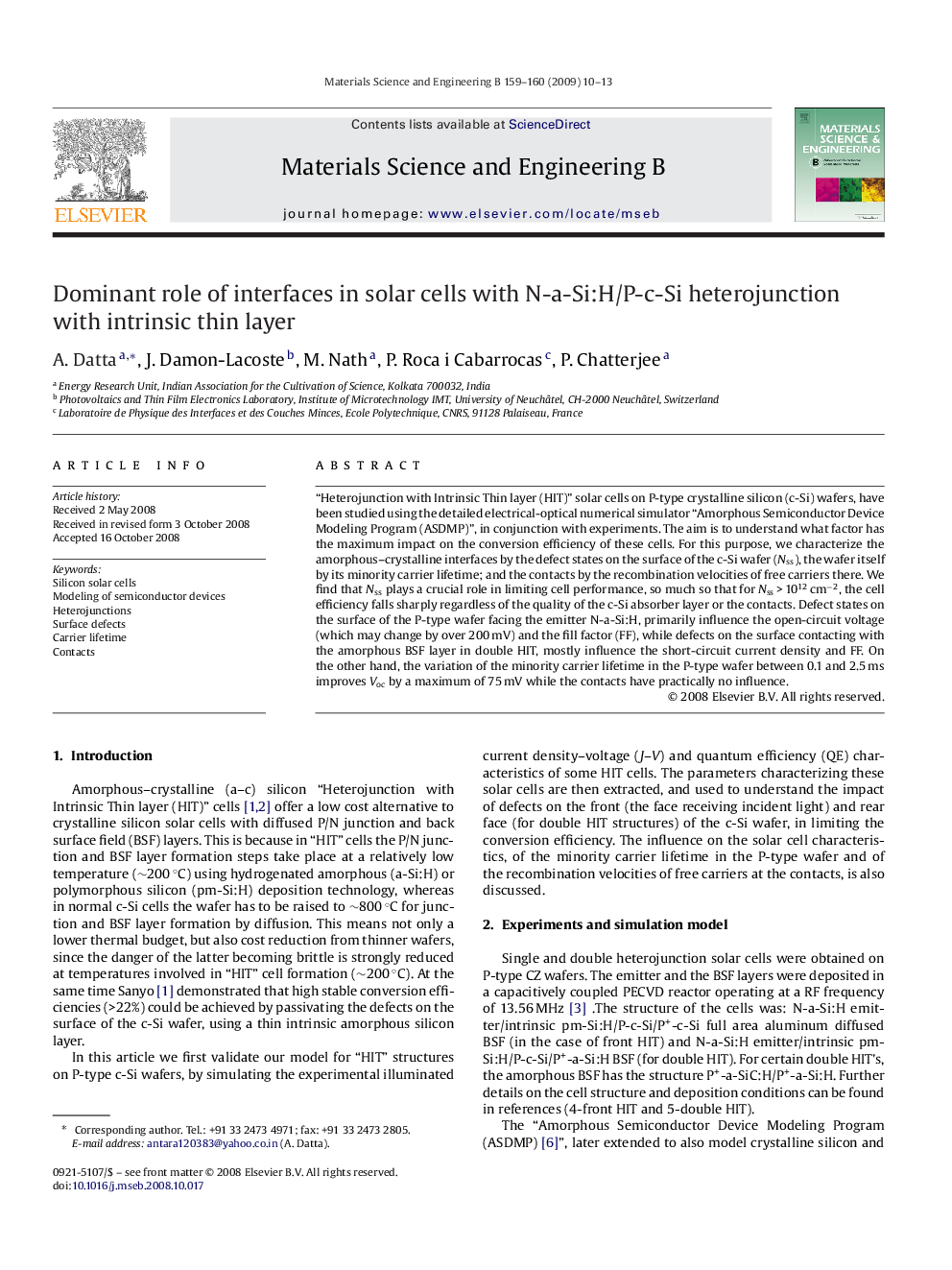| Article ID | Journal | Published Year | Pages | File Type |
|---|---|---|---|---|
| 1530618 | Materials Science and Engineering: B | 2009 | 4 Pages |
“Heterojunction with Intrinsic Thin layer (HIT)” solar cells on P-type crystalline silicon (c-Si) wafers, have been studied using the detailed electrical-optical numerical simulator “Amorphous Semiconductor Device Modeling Program (ASDMP)”, in conjunction with experiments. The aim is to understand what factor has the maximum impact on the conversion efficiency of these cells. For this purpose, we characterize the amorphous–crystalline interfaces by the defect states on the surface of the c-Si wafer (Nss), the wafer itself by its minority carrier lifetime; and the contacts by the recombination velocities of free carriers there. We find that Nss plays a crucial role in limiting cell performance, so much so that for Nss > 1012 cm−2, the cell efficiency falls sharply regardless of the quality of the c-Si absorber layer or the contacts. Defect states on the surface of the P-type wafer facing the emitter N-a-Si:H, primarily influence the open-circuit voltage (which may change by over 200 mV) and the fill factor (FF), while defects on the surface contacting with the amorphous BSF layer in double HIT, mostly influence the short-circuit current density and FF. On the other hand, the variation of the minority carrier lifetime in the P-type wafer between 0.1 and 2.5 ms improves Voc by a maximum of 75 mV while the contacts have practically no influence.
